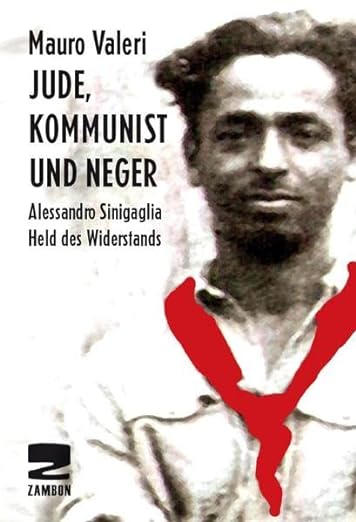Alessandro Sinigaglia was among several notable anti-fascist and anti-Nazi partisan fighters in Europe during World War II who were of African descent. Sinigaglia, born in the town of Fiesole near Florence, Italy, on January 2, 1902, was the son of an Italian Jew, David Sinigaglia, a mechanic from Mantua, and an African American maid from St. Louis, Missouri, Cynthia White. Upon the death of his mother, young Sinigaglia moved with his father to Florence in the working-class neighborhood of Santa Croce. Following some technical schooling and work in his father’s shop, he served a two-year stint in the Italian Navy. Returning to Florence, he made contacts with “clandestine communist circles,” in which he rose to prominence during the fascist regime of dictator (“El Duce”) Benito Mussolini, who persecuted leftist groups.
Sinigaglia crossed Switzerland and Germany to arrive in Moscow in 1928. Here, he joined fellow Italian exiles, enrolled in the Leninist Zapada school, learned the Russian language from a party comrade, and in 1930, fathered a daughter (Margherita) with compatriot Alina Rivina. For reasons related to political propaganda, in 1935, the Community Party dispatched him to Switzerland. He was arrested in Bellinzona, imprisoned, and expelled by the Swiss. In 1936, he was in Paris meeting with the Central Committee of the Italian Communist Party in exile. When the Spanish Civil War began in July of that year, Sinigaglia was among the earliest volunteers to fight with Republicans opposing Francisco Franco’s Nationalists. He and his cohorts were forced to flee to France, where he was interned in the St. Cyprien camp for refugees of the conflict. By April 1941, Sinigaglia was back in Florence, where he was jailed as an incorrigible subversive in addition to being, as noted by the Carabiniere (military police) as, “the son of a Jew and his mother was Black.” Two months later, he was confined on the island of Ventotine, where he was in the company of several leading Italian communists.
With the fall of Mussolini in 1943, Sinigaglia was allowed to return to Florence. Using the code name “Vittoria,” the party assigned him the task of organizing and recruiting young partisans throughout Tuscany to foil the activities of fascist gangs. On one occasion, he narrowly missed being captured by the violent rightist Comitato Toscano di Liberazione Nazionale (Tuscan National Liberation Committee). Forced into hiding, he found safety for a time in the home of a friend, Swiss composer and conductor Igor Markevitch, who regarded Sinigaglia as “inflexively resolute” and “the terror of the fascists” who nonetheless was always in an “even and sweet mood.”
The partisan leader next headed one of the patriotic action groups that fought Italian fascists and the German Army still occupying much of Italy. On January 14, 1944, in his most daring mission, he and his men simultaneously detonated nine bombs across Florence, prompting occupying Germans to declare a curfew that included prohibiting the use of bicycles. The ensuing manhunt for Sinigaglia ended on February 13, 1944, when he met with a friend at a restaurant in the heart of Florence. Easily recognized by Italian fascists, he was chased down a street and shot dead. He was 42. In 1955, a plaque was installed on the Via de Pandolfini honoring Sinigaglia as “the heroic partisan commander,” and in 1958, Italy’s President Giovanni Gronchi posthumously awarded him the Silver Medal for military valor.

